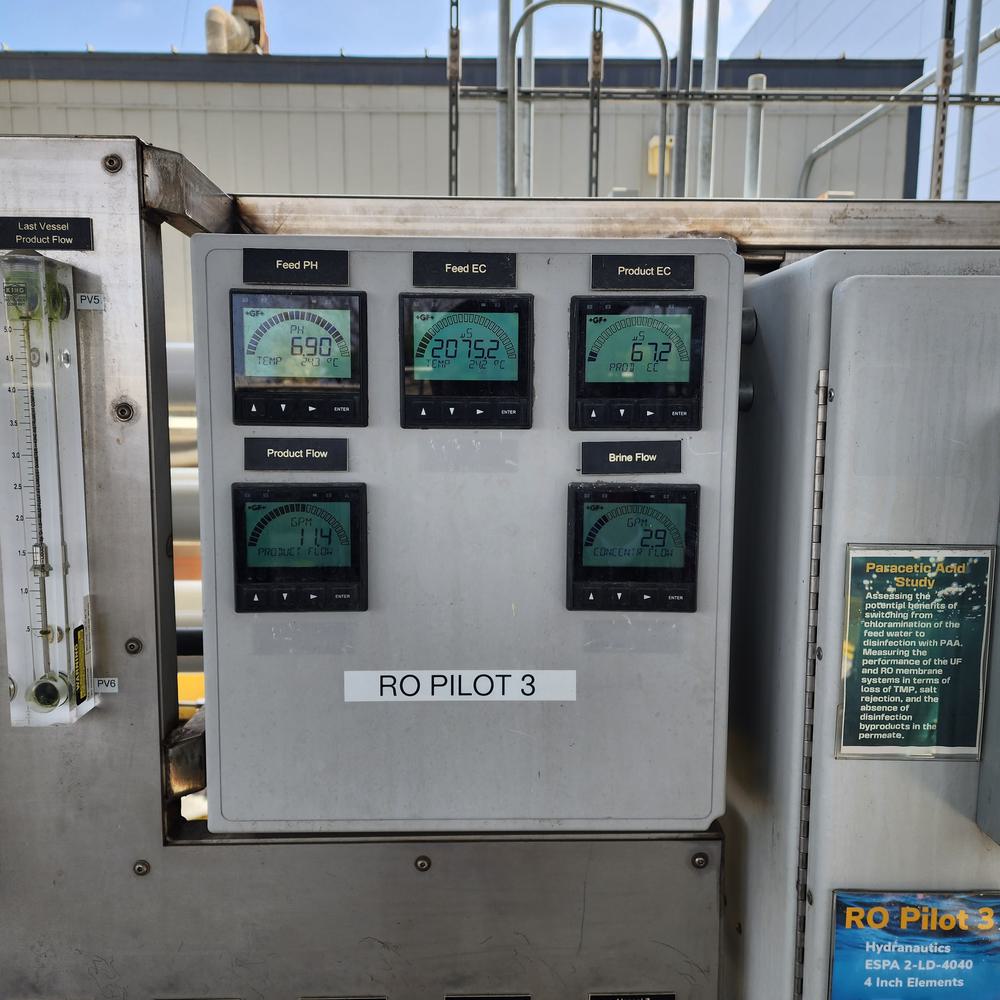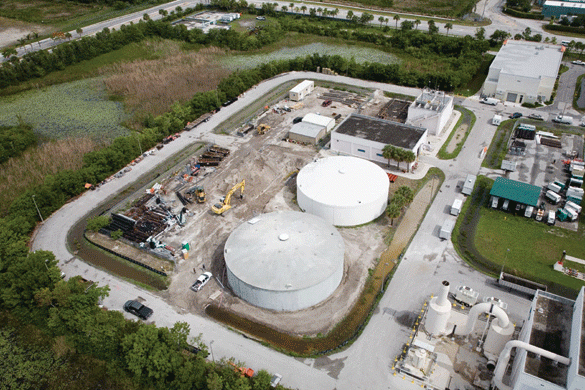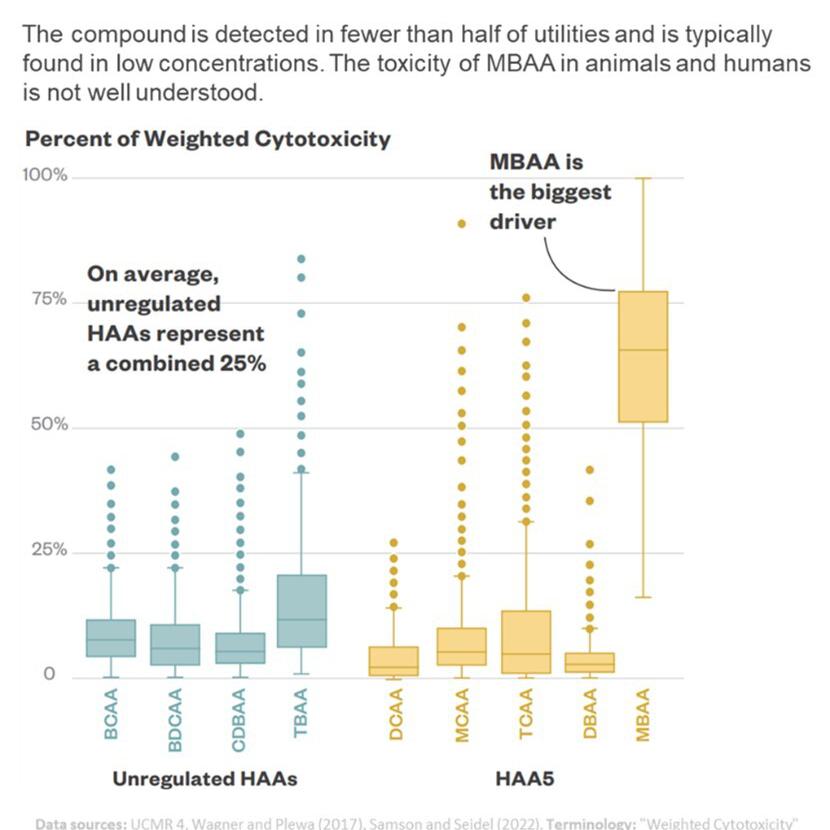Innovative Aerobic Granular Sludge Tech Meets Low-Nutrient Targets
A pilot at the Noman M. Cole Jr. Pollution Control Plant proved that AquaNereda®—a space-saving treatment system—can help wastewater facilities achieve enhanced nutrient removal.
At a Glance
- Hazen, Fairfax County, and wastewater tech manufacturer Aqua-Aerobic Systems, Inc., successfully piloted AquaNereda®, a space-efficient secondary treatment system that uses aerobic granular sludge to remove nutrients and organic matter from wastewater.
- Without any tertiary treatment, the pilot kept levels of ammonia below 0.5 milligrams per liter (mg/L), total inorganic nitrogen (TIN) below 6 mg/L, and total phosphorus (TP) below 0.5 mg/L. It also proved resilient to wet weather and daily flows.
- Those results proved that AquaNereda® can help wastewater facilities meet strict nitrogen limits like those required for the Chesapeake Bay, a sensitive receiving water.
- The pilot was also one of the first to use methanol, a supplementary carbon source, following aeration in an AquaNereda® setup.
- The results also showed that the process is compatible with the tertiary and solids treatment methods typically used at enhanced nutrient removal facilities.

Elizabeth Manning has experience piloting novel aerobic granular sludge treatment technologies, along with designing and evaluating a wide range of other wastewater and biosolids treatment processes.
(Top) A granule of sludge created by the AquaNereda® process, as seen through a microscope.
Related Topics:
"Our main question was, can this technology—which is really new—meet low nutrient limits for a plant like Noman Cole? The pilot showed that it can."
~ Elizabeth Manning, PE, Hazen

The microbead-like aerobic granular sludge (AGS) in the pilot’s two reactors (the white cylinders above) was started using granules of AGS from an AquaNereda® unit in Illinois.
The Noman M. Cole Jr. Pollution Control Plant (NCPCP) in Fairfax County, Virginia, plans to expand its capacity from 67 million gallons per day (mgd) to 80 mgd. But to accommodate its neighbors—which include a baseball field, shopping center, and major highway—it needs to stay within its existing footprint. In other words, it needs to treat more wastewater in less space, a strategy called intensification.
Hazen helped NCPCP pilot one intensification option: AquaNereda®, a biological nutrient removal (BNR) system that was invented in Europe and is provided to U.S. utilities by Aqua-Aerobic Systems, Inc. AquaNereda® uses aerobic granular sludge (AGS).
- AGS is a kind of activated sludge: sludge that’s laden with microorganisms and used to remove nutrients and organic matter from wastewater.
- Regular activated sludge is dispersed throughout the water and looks fluffy. AGS looks more like microbeads—small, dense granules.
- AGS settles faster than standard activated sludge, reducing the time and space needed to separate the sludge from the treated wastewater.
The technology in AquaNereda® was pioneered in the Netherlands and has since spread widely. But when the pilot took place, it hadn’t been explored much in the U.S., particularly not at large facilities with low-nutrient limits like NCPCP.
The plant currently uses secondary and tertiary treatment to meet total nitrogen limits of 3 milligrams per liter (mg/L) and total phosphorus (TP) limits of 0.18 mg/L. Hazen designed and led a nine-month pilot with NCPCP and Aqua-Aerobic Systems to see if AquaNereda® could help the plant intensify its secondary treatment and still meet those goals.
(Above) Testing during the pilot showed that sludge made entirely of aerobic granular sludge (AGS) and sludge made of a mix of AGS and mixed liquor suspended solids (MLSS) settled faster than traditional MLSS.

How the Technology Works
Traditional BNR happens across space. Wastewater flows through a long BNR tank, often divided into smaller zones that favor different kinds of beneficial microorganisms used to clean the wastewater. The mixture then flows into clarifiers (settling tanks), where the activated sludge containing the bacteria separates from the treated water.
In AquaNereda® systems, treatment happens across time. Wastewater flows into a single tank called a sequencing batch reactor. Inside, the water gets treated by the microorganisms in the AGS while being subjected to mixing, aeration, and other conditions that encourage the continued formation of those sludge granules. The granules settle before a new batch of wastewater flows in, pushing out the treated water. Since the AGS sinks so quickly, there’s no need for a separate clarifier.
Pilot and Results
The team set up two 450-gallon AquaNereda® reactors to run simultaneously at NCPCP. For nine months, Hazen ran and monitored the reactors with onsite help from NCPCP staff and Aqua-Aerobic Systems. The team analyzed how well the reactors met NCPCP’s nutrient limits during ordinary conditions, as well as during simulated wet weather events and simulated spikes of cyanide levels in the wastewater.
The AGS pilot achieved the low TIN target (less than 6 mg/L) along with low TP levels (less than 0.5 mg/L). Those results, when combined with NCPCP’s tertiary treatment, would allow the plant to meet its stringent nitrogen and phosphorus limits. The pilot also demonstrated excellent settling rates and resilience to daily peaks and wet weather.
To improve the carbon to nitrogen balance for the nitrogen removal process, Hazen and Aqua-Aerobic Systems worked to determine how and when to add methanol—a supplemental carbon source—to the sequencing batch reactors during treatment. It was the first use of supplemental carbon in a post-anoxic cycle application in an AquaNereda® system.
More broadly, the pilot was one of the first to demonstrate that AquaNereda® can help facilities in the U.S. meet low nutrient limits. Its success means this kind of system could help other wastewater plants in the country meet strict nutrient limits—even if they’re tight on space.

The AquaNereda® pilot produced fast-settling aerobic granular sludge (AGS) granules like the one above, measured in millimeters.






















